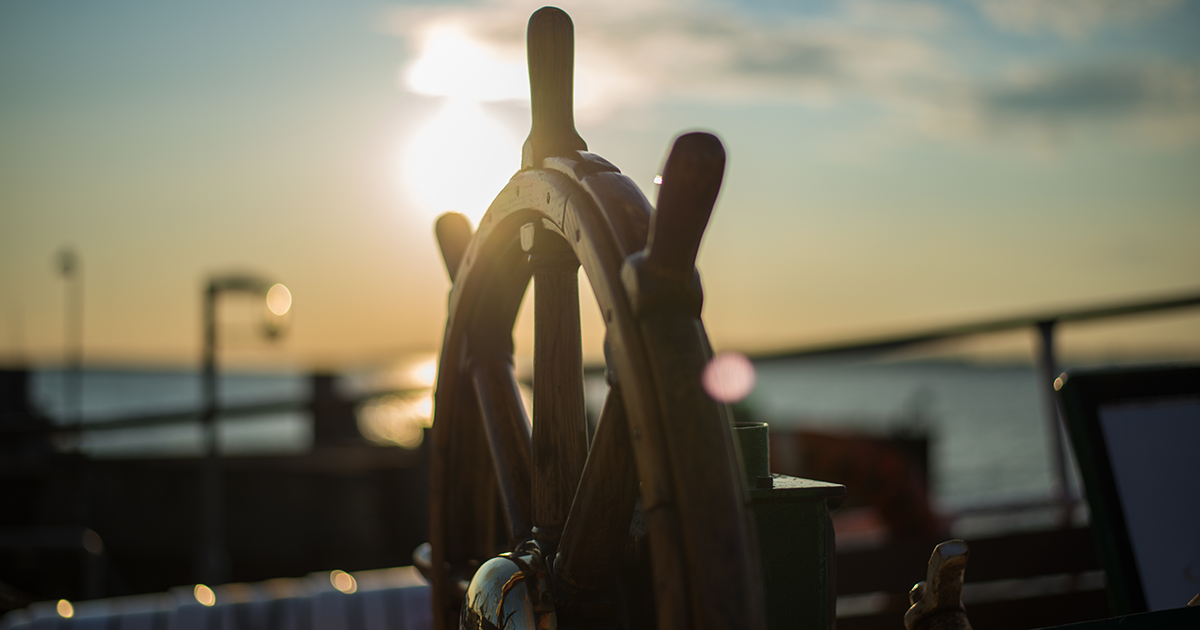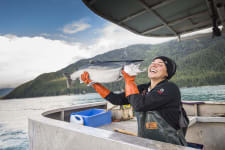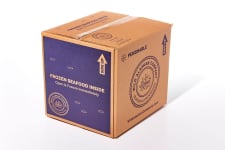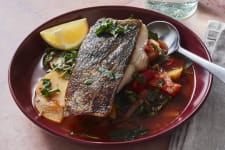For traditionalists, there’s a prevailing sentiment that seafood only pairs with white wine or a rosè. However, red wine lovers might find this limitation frustrating, especially during the winter when the season calls for curling up with a glass of red.
Even though white wine and seafood are a classic match, the truth is that the right red can be paired just as successfully with fish; there are even chilled reds that work well for hot summer days.
With that in mind, we’re here to debunk the long-standing myth that fish only goes with white wine by giving you some solid red wine/seafood pairing ideas.
The Cardinal Rules of Pairing Red Wine with Fish
When pairing red wine with seafood, there are two rules you don’t want to break.
First, stay away from tannic wines (tannins are the naturally occurring compound — known as polyphenol — found in plants, seeds, bark, wood, leaves, and fruit skins). A tannic wine is likely to leave a slightly dryer taste in the mouth.
Instead, when it comes to pairing red wine with fish, you want wines that are low in tannins; these wines may be described as having soft or supple tannins. While desirable when pairing with red meat, tannins will get in the way of the flavorful nuances of fish, especially more delicate white fish like halibut and cod.
Second, don’t pair your red wine selection with citrusy recipes. The red wines you’ll be pairing up with your fish are going to be acidic, but a lemon sauce or ceviche will completely overpower the bright characteristics of your selection of wine.
Keeping these two rules in mind, there are so many red wine options that will work well with salmon, Pacific halibut, and Pacific cod. Beyond seeking acidic wines low in tannins, try matching up the flavors of your recipe with flavor notes in your wine pairing. The cooking method should also help you choose the wine you’re drinking; gentler cooking methods should be paired with softer wines, while broiled or grilled fillets can be complemented by a more robust choice.
Here are a few more pairing guidelines to follow for each type of wild Alaskan catch:
Salmon
What to Drink: A rich, flavor-forward fillet of salmon can be paired with light- to medium-bodied reds. Either sockeye or it’s lighter cousin coho would match up nicely to a bright pinot noir from Oregon or Washington.
What to Eat: This elegant recipe for broiled wild salmon is served with a syrupy sauce made from pinot noir, honey, and herbs that hint at licorice. The addition of morel, a spongy mushroom with an earthy depth of flavor, makes a red wine pairing ideal for this dish.
Pacific Cod
What to Drink: Light-bodied beaujolais, made from gamay grapes in Provence, is low in alcohol, high in acid, and has soft tannins that won’t wreck your palette for the delicate flakes of Pacific cod. Pro Tip: Beaujolais is enjoyed best lightly chilled.
What to Eat: Pacific is the perfect choice for this Mediterranean-inspired recipe. Fillets are gently poached in red wine, broth, and a bit of tomato sauce, punctuated by the briny flavor of kalamata olives and infused with fresh herbs. If you’re making this recipe for two or three people, you’ll be using less than a cup of wine for the poaching liquid — meaning, you’ll have plenty left over to accompany your final dish.
Pacific Halibut
What to Drink: Barbera, an acidic grape from the Piedmont region in Northern Italy, is juicy and low in tannins. That means it can enhance the flavors of your dish without interfering with the silky texture of halibut.
What to Eat: A firm white fish like Pacific halibut is an ideal component of cioppino, a hearty and spicy Italian fish stew made with whatever is fresh from your fishmonger. While cioppino broth typically calls for a bit of white wine, this recipe for cioppino uses red wine to build a richer base that has a nice balance of acidity.






